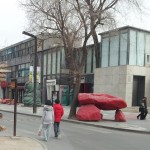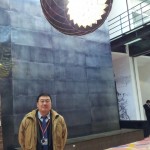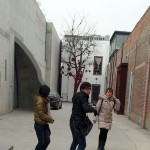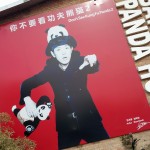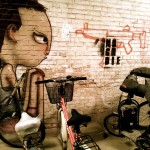Time out: New art in Beijing
Thursday in Beijing. The Prime Minister had pooled events for the first half of the day, so most reporters had a break from work. A few of us took a suggestion from Canadian embassy staff and made our way to 798 Art District, a maze of contemporary art galleries, cafés and design stores in a mid-20th-century industrial neighbourhood on the way out to Beijing Airport. In the way it’s repurposed factory space to creative ends, it’s a little like the Distillery District in Toronto or the Exchange District in Winnipeg, except far larger and more elaborate.
Share
Thursday in Beijing. The Prime Minister had pooled events for the first half of the day, so most reporters had a break from work. A few of us took a suggestion from Canadian embassy staff and made our way to 798 Art District, a maze of contemporary art galleries, cafés and design stores in a mid-20th-century industrial neighbourhood on the way out to Beijing Airport. In the way it’s repurposed factory space to creative ends, it’s a little like the Distillery District in Toronto or the Exchange District in Winnipeg, except far larger and more elaborate.
We only had an hour and a half to poke around. I could have spent a week. I’ve posted a few photos below. Many of these photos come from the Ullens Centre for Contemporary Art, a great big gallery-exhibition space opened in 2007 by a Belgian couple. It’s obviously a Big Deal. The Canadian embassy showed Edward Burtynsky photos there not long ago; here’s a photo page showing the day Frank Gehry came to visit; the exhibit by video artist and sculptor Zhan Wang, which is hard to describe but haunting, was sponsored by Louis Vitton.
One piece at UCCA — I’m sorry I didn’t note the artist’s name — makes prominent use of excerpts from Byron’s poem The Age of Bronze:
Great things have been, and are, and greater still
Want little of mere mortals but their will:
A wider space, a greener field, is given
To those who play their “tricks before high heaven.”
Ai Weiwei, one of the most prominent Chinese dissidents, clearly has a close relationship with UCCA. An interview with him appears in a book I bought there by the gallery’s director, and his photo appears on the website.
Everything about this whole neighbourhood — the art, the mix of cultures, the relaxed relationship with the political censors, the way the display spaces roost in the skeleton of a mid-century worker’s nightmare — hints at the future China that, if everyone concerned is very lucky indeed, may not be too far distant. The world is enthralled and a little unnerved at the sight of tens of millions of Chinese following orders. Imagine each of them following their heart.
